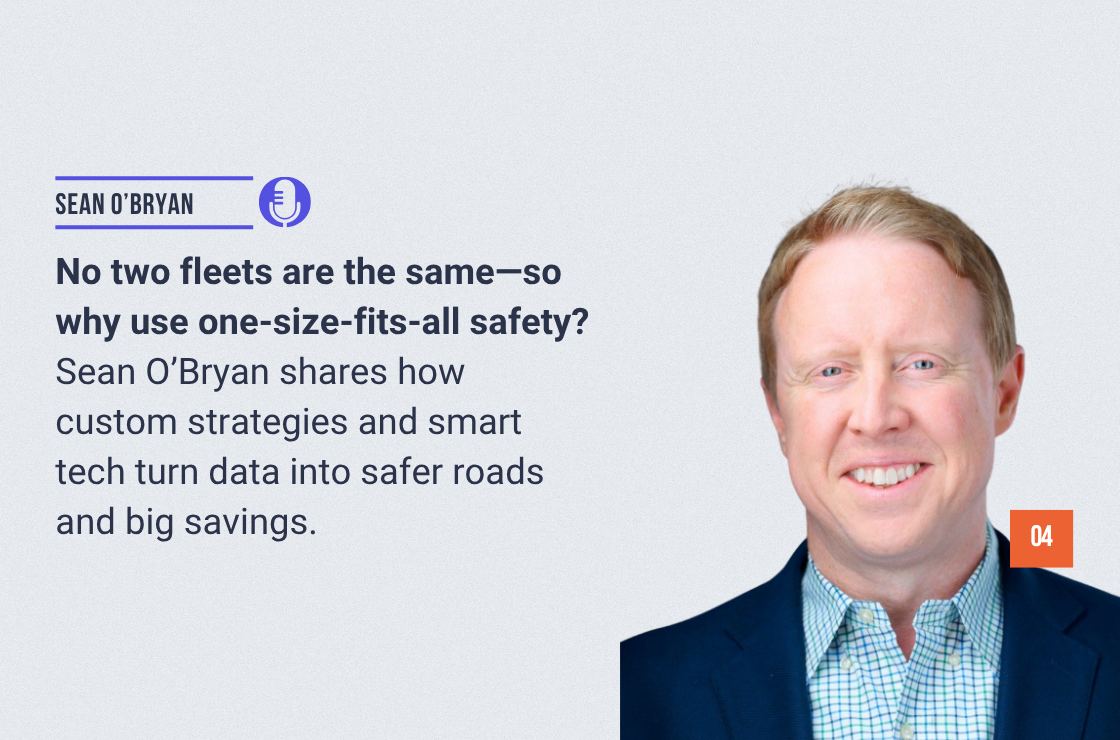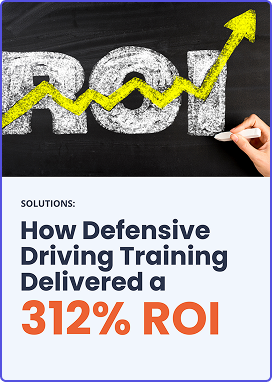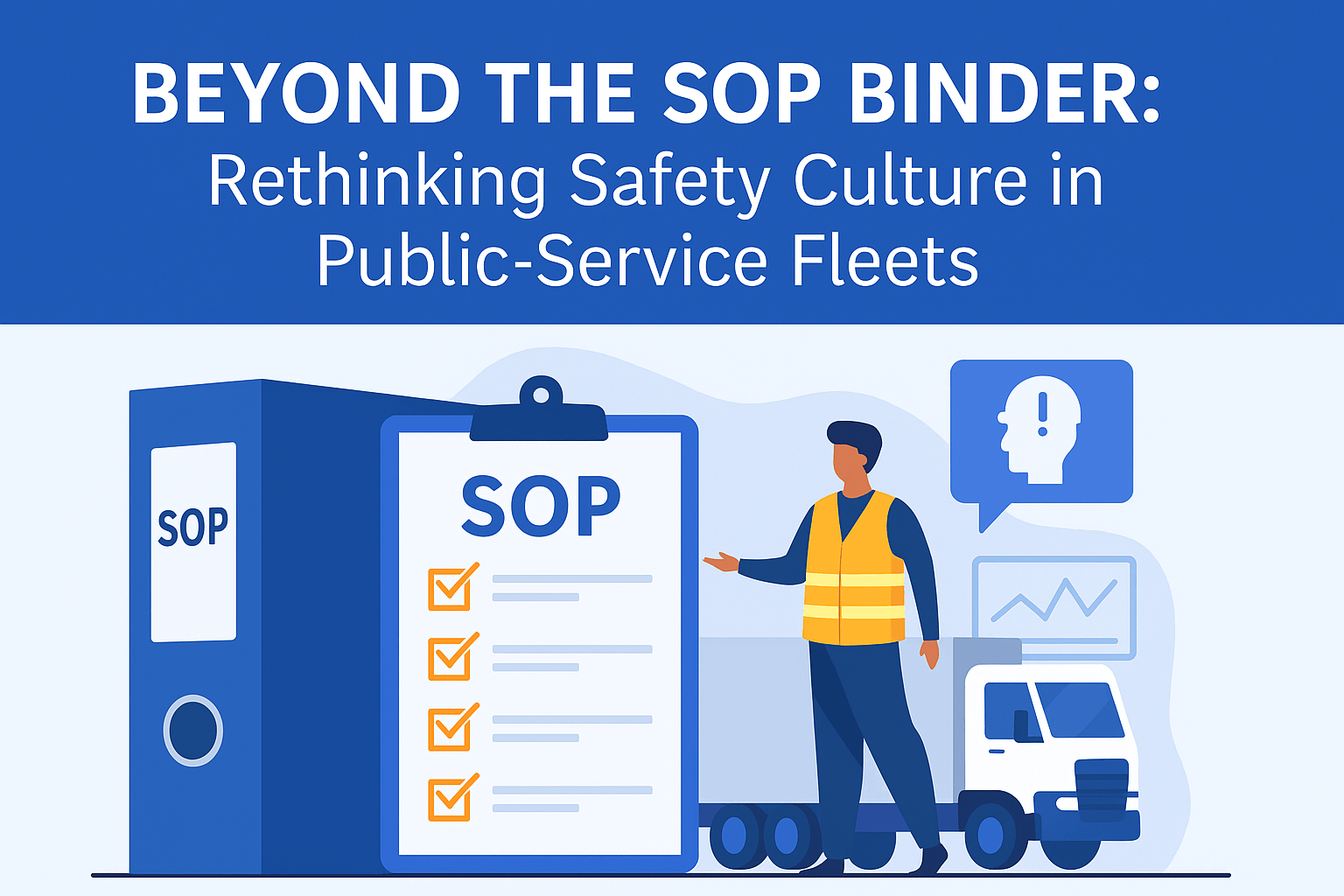
| Sean O’Bryan is a Professional Safety Consultant at Verizon Connect, a fleet management technology company that helps businesses improve safety, efficiency, and compliance through telematics solutions. With a background in risk management and fleet safety, he works with companies to implement data-driven safety programs that reduce accidents and operational costs. Sean has experience leveraging telematics, driver coaching, and gamification strategies to help fleets create safer road environments.
|
Here’s a glimpse of what you’ll learn:
- [02:33] How Sean O’Bryan got started in fleet management and what led him to fleet safety
- [08:08] Common mistakes companies make when deploying safety programs
- [11:07] Why defining the problem is crucial before implementing safety technology
- [13:42] The role of change management in getting driver buy-in for new safety tools
- [16:42] How fleets misuse telematics and fail to take full advantage of safety data
- [21:14] The impact of proactive safety measures on reducing risk and operational costs
- [23:15] The importance of transparency when introducing monitoring technology to drivers
- [29:15] Managing data effectively to drive real improvements in fleet safety
- [35:21] How gamification and driver incentives can improve engagement with safety programs
- [38:48] Why a one-size-fits-all approach to fleet safety doesn’t work
In this episode…
Every fleet is unique, much like fingerprints. From driver behavior to operational risks, each fleet presents its own distinct challenges. So how can companies tailor their safety strategies to fit their specific needs instead of applying one-size-fits-all solutions?
According to Sean O’Bryan, a professional safety consultant with years of experience in fleet risk management, the key is understanding that decisions should be based on data, not assumptions. He highlights that many fleets invest in safety technology but fail to use it effectively, either by not engaging drivers or by misinterpreting telematics data. Instead of blindly implementing new tools, companies must take a step back, assess their specific pain points, and develop a safety program that fits their fleet’s unique patterns. When done right, fleets can see measurable improvements in driver behavior, fewer accidents, and long-term cost savings.
In this episode of Roadrageous, Liam Hoch and Chad Lindholm sit down with Sean O’Bryan, Professional Safety Consultant at Verizon Connect, to discuss why every fleet requires a tailored approach to safety. They explore common mistakes companies make when rolling out safety programs, how telematics data can be leveraged for meaningful change, and why driver buy-in is essential for long-term success. Sean also shares how gamification and a strong safety culture can make fleets safer and more efficient.
Quotable Moments:
- “Every fleet is different, similar to a fingerprint; success comes from understanding your unique challenges and opportunities.”
- “Safety is leadership-born and employee-led; you need everyone involved at all different levels of the company.”
- “The insurance industry is working in a deficit, prompting fleets to invest in technology to avoid operational impacts.”
- “Collaboration is about asking the simple question: Why is this important to do?”
- “If you prevent the collision, you’re going to prevent the employee injury as well.”
Action Steps:
- Foster transparent communication: Open lines of communication build trust and understanding, ensuring that everyone is aware of the benefits and functionalities of new tools, thereby reducing resistance and increasing acceptance.
- Engage leadership commitment: Leadership commitment ensures that safety remains a priority amidst other business objectives, securing the necessary resources and attention for sustained improvement.
- Implement gamification strategies: By introducing elements like leaderboards and rewards, companies can motivate drivers to consistently practice safe behaviors, transforming safety from a mandatory task into a positive, competitive challenge.
- Utilize data efficiently: Concentrating on the most critical data points will allow organizations to effectively address safety issues without being overwhelmed by information, allowing for targeted interventions that yield measurable results.
- Start with foundational tools: Building a strong foundation with simpler technologies allows organizations to develop essential skills and processes, setting the stage for the successful implementation of advanced safety solutions.
Beyond the Widget: Building a Safety Ecosystem with Sean O’Bryan
From IT black belt to safety champion, Sean O’Bryan’s journey is a testament to the power of passion and purpose. In the latest episode of Roadrageous, Sean, a seasoned safety expert from Verizon Connect, shared his insights on transforming driver safety through technology and a people-first approach.
A Serendipitous Start: From IT to Safety
Sean’s path wasn’t a straight line. With an IT degree and a stint at GE, he found his calling in safety, drawn by its public service orientation and the opportunity to make a real difference. He emphasizes that a great manager can be a game-changer in shaping your career trajectory.
Common Pitfalls: Leadership, Planning, and People
Sean highlighted several common mistakes companies make when implementing fleet safety programs:
- Lack of Leadership Commitment: True safety culture starts at the top.
- Insufficient Planning: Defining the problem and involving the right people are crucial.
- Post-Implementation Neglect: Sustaining change requires dedicated resources.
The Urgency of Insurance: A Catalyst for Change
The fractured insurance industry, with loss ratios outpacing revenue, is driving a sense of urgency among fleets. While technology can offer “insurance coupons,” Sean stresses the importance of a solid safety foundation before diving into advanced solutions.
Telematics as a Stepping Stone: Building Engagement
Telematics can be a powerful tool for building awareness and engagement. Sean shared a compelling statistic: simply turning on key alerts and reporting features led to significant reductions in speeding and harsh driving events.
Driver Buy-In: Transparency and Communication
Sean emphasized the importance of transparency and communication when implementing technology. Drivers need to understand why it’s being done, how it works, and their privacy concerns must be addressed.
From Productivity Pushback to Motivation Building
Addressing the challenge of balancing productivity with safety, Sean advocated for setting realistic expectations and focusing on small, manageable wins. He highlighted the power of exoneration and claim mitigation through camera footage.
Champions of Change: Volunteers, Not Voluntolds
Sean stressed the importance of identifying champions within the organization—those who genuinely believe in safety and are willing to lead by example.
Gamification and Data Management: Driving Behavior
Sean discussed the value of gamification in driving safe behavior and the importance of focusing on leading indicators like driving risk scores and near-miss incident rates.
The Vision for a Safety Ecosystem: Collaboration and Standardization
Sean envisions a future where insurance carriers and technology providers collaborate to create a dynamic system that rewards fleets for demonstrating consistent safety performance.
Key Takeaways:
- Safety culture starts with leadership commitment.
- Thorough planning and problem definition are essential.
- Technology is a tool for coaching and improvement, not just discipline.
- Driver engagement is crucial for success.
- Gamification and leading indicators can drive positive behavior change.
- Collaboration across the industry is key to building a safer future.
Sean O’Bryan’s insights remind us that safety is not just about technology; it’s about people, culture, and a shared commitment to making our roads safer.
Conclusion
Sean O’Bryan on Roadrageous emphasizes that fleet safety strategies must be tailored, not generic. He stresses data-driven decisions over assumptions, advocating for effective use of telematics and technology by addressing specific fleet pain points. Driver engagement and buy-in are crucial for success, alongside gamification and a strong safety culture, leading to measurable improvements in behavior, accident reduction, and cost savings.
Resources mentioned in this episode:
- Liam Hoch on LinkedIn
- Chad Lindholm on LinkedIn
- Gary Alexander on LinkedIn
- IMPROVLearning
- Sean O’Bryan: LinkedIn | Email
- Verizon Connect
- “Safety Is NOT a Department and Dispelling Other Myths…” with Brian Fielkow on Roadrageous
- Telematics







